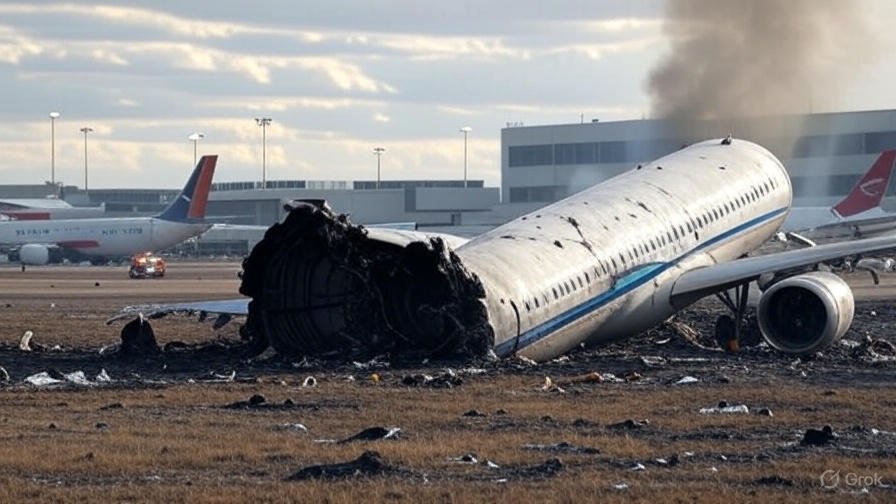On March 13, 2025, Denver International Airport became the scene of a terrifying incident when an American Airlines Boeing 737-800 caught fire after an emergency landing. The dramatic evacuation of 172 passengers and six crew members, with some fleeing onto the plane’s wing amidst smoke and flames, has left many shaken. Here’s a detailed look at what happened, the aftermath, and what it means for air travel safety.
Table of Contents
A Sudden Emergency in the Skies
American Airlines Flight 1006 was en route from Colorado Springs to Dallas-Fort Worth when the crew reported engine vibrations just 20 minutes into the flight. The decision was made to divert to Denver International Airport for an emergency landing. The plane touched down safely around 5:15 p.m. local time, but as it taxied to the gate, the right engine erupted in flames. Passengers described a chaotic scene, with thick black smoke filling the cabin and flames visible from the wing. One passenger, Hani Levi, a former military airplane mechanic, recounted seeing smoke followed by fire from her window seat, adding to the panic as people scrambled to escape.
Frantic Evacuation Efforts
The evacuation was anything but orderly. As smoke poured into the cabin, passengers were forced to act quickly. Some slid down emergency slides, while others climbed onto the wing through overwing exits or used the jet bridge. A jammed escape slide complicated the process, and a flight attendant’s attempt to alert the pilots via the cockpit door went unanswered initially, heightening the chaos. One mother screamed for her children’s safety, while others, like Levi, remained seated to assist a handicapped passenger. Despite the pandemonium, all 178 people on board were evacuated, with 12 passengers treated for minor injuries at local hospitals. The swift response from ground crews, who extinguished the fire in under a minute, likely prevented a worse outcome.
Investigating the Cause
The National Transportation Safety Board (NTSB) and Federal Aviation Administration (FAA) are investigating the incident, with a preliminary NTSB report pointing to maintenance issues. Investigators found loose and incorrectly installed parts in the engine, with one component allowing fuel to leak, potentially sparking the fire. Airport cameras captured a trail of fluid behind the plane as it taxied, supporting this theory. The Boeing 737-800, built in 2012, was equipped with engines from CFM International, and the investigation will likely scrutinize maintenance records and procedures. American Airlines praised their crew and first responders for their quick actions, emphasizing safety as their priority.

A String of Aviation Incidents
This fire comes amid a troubling series of aviation incidents in 2025, raising concerns about air travel safety. In January, a midair collision between an American Airlines regional jet and an Army helicopter near Washington, D.C., killed 67 people. In February, a Delta Air Lines jet flipped upside down during a landing in Toronto, injuring 18. These events, coupled with the Denver fire, have fueled public unease, though experts note that flying remains one of the safest modes of transportation. The FAA and NTSB are under pressure to identify patterns and implement stricter safety measures to restore confidence.
What’s Next for Travelers and Airlines?
The Denver incident has left travelers like Colorado resident Ian Paisley shaken but determined to continue flying, citing the rarity of such events. However, the string of high-profile incidents has led airline CEOs, including American Airlines’ Robert Isom, to acknowledge a dip in travel demand due to safety concerns and economic uncertainty. For now, Denver International Airport has resumed normal operations, though gate C38, where the incident occurred, was briefly out of service. The aviation industry faces increased scrutiny as it works to address maintenance standards and reassure the public. As investigations continue, passengers are left hoping for answers and safer skies.